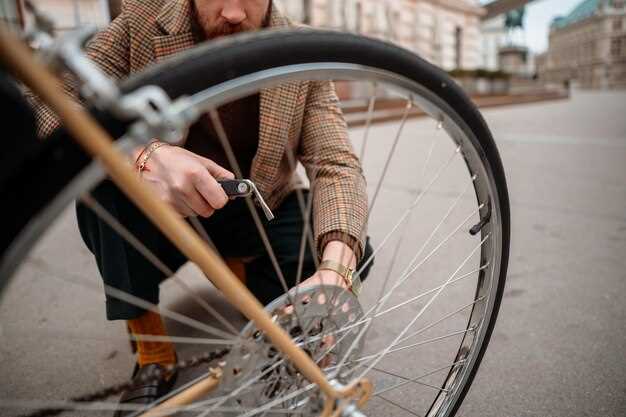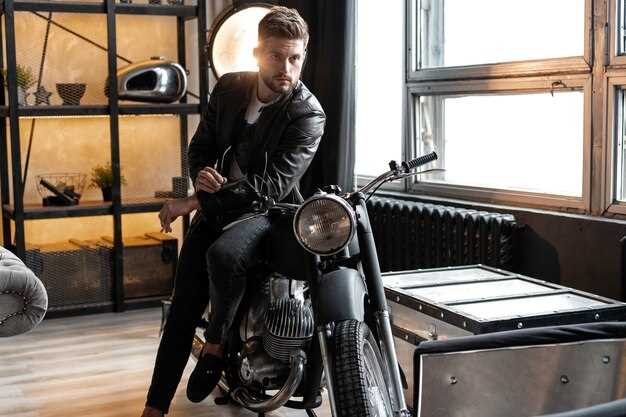
When considering the purchase of a classic motorcycle, it is essential to understand that this decision goes beyond mere aesthetic appeal. A classic bike is not just a mode of transportation; it is a statement of style and a connection to history. The charm of owning a classic motorcycle lies in its unique character and nostalgia, which can only be appreciated by true enthusiasts.
Several factors play a crucial role in ensuring a successful acquisition of a classic bike. First and foremost, potential buyers should thoroughly research the model they are interested in. Factors such as the bike’s production year, engine specifications, and historical significance can greatly influence its value and reliability. Furthermore, understanding the market trends and pricing is vital, as it helps buyers negotiate a fair price for their desired purchase.
Another important consideration is the motorcycle’s condition. Prospective owners must assess both the mechanical and cosmetic state of the bike. A well-maintained classic motorcycle can offer a rewarding experience, while one in disrepair may lead to unexpected expenses and challenges. Engaging with communities of classic bike enthusiasts can provide valuable insights and tips on what to look for during the evaluation process.
Ultimately, the journey of purchasing a classic motorcycle is as rewarding as riding it. By focusing on these key factors, buyers can ensure that their investment not only meets their expectations but also enhances their appreciation of the rich heritage found in classic motorcycles.
Assessing the Condition of a Classic Bike Before Purchase

Buying a classic bike requires careful evaluation to ensure you make a wise investment. Here are key tips to assess the condition of a classic motorcycle before finalizing your purchase.
- Visual Inspection:
- Examine the frame for rust, dents, or cracks.
- Check the paint for inconsistencies, which can indicate a previous crash or poor repairs.
- Inspect all chrome parts for pitting or corrosion.
- Mechanical Condition:
- Start the engine and listen for unusual noises, which could signal underlying problems.
- Check for leaks under the bike, especially around seals and gaskets.
- Examine the electrical system by testing lights, signals, and the battery condition.
- Brakes and Tires:
- Check the brake pads and rotors for wear.
- Inspect the tires for tread depth and signs of dry rot or cracking.
- Documentation:
- Request service records to understand maintenance history.
- Verify the bike’s title to ensure it is clear and free of liens.
- Research the bike’s model for common issues related to the year and make.
- Test Ride:
- Take the bike for a short ride to assess handling and comfort.
- Pay attention to any vibrations or handling irregularities.
By following these tips, you can better evaluate the condition of a classic bike and make a more informed purchasing decision. Always consider having a trusted mechanic conduct a thorough inspection if you are not confident in your ability to assess the bike yourself.
Understanding the Market Value and Pricing Trends for Classic Motorcycles
When considering the purchase of a classic motorcycle, understanding its market value is crucial. The value of a classic bike can fluctuate significantly based on various factors such as brand reputation, age, condition, and historical significance. Researching these aspects can provide valuable insights into fair pricing.
One of the key tips for buyers is to examine recent sales data for similar models. This information can often be accessed through auction results, online marketplaces, and classic motorcycle clubs. Keeping track of these trends allows potential buyers to establish a realistic budget and avoid overspending.
Condition plays a pivotal role in determining a motorcycle’s market value. Bikes that have been well-maintained, restored to original specifications, or possess rare features typically command higher prices. Always inspect the motorcycle thoroughly or obtain a professional appraisal to assess its true worth.
Market demand significantly influences pricing trends. Popular models from renowned manufacturers tend to appreciate faster than less desirable models. Keeping an eye on enthusiast forums or attending classic motorcycle shows can help gauge current trends and demands in the market.
Additionally, consider the impact of seasonal fluctuations on the pricing of classic motorcycles. Often, demand peaks during spring and summer months when enthusiasts are more inclined to invest in a bike. Timing your purchase can yield better pricing opportunities.
Lastly, remember that the emotional value associated with owning a classic motorcycle should also factor into your decision-making process. While market value provides a guideline, the personal significance of the bike you choose is equally essential for a satisfying ownership experience.
Evaluating Documentation and History of Classic Motorcycles

When considering the purchase of a classic bike, assessing its documentation and history is crucial. This step not only establishes the authenticity of the motorcycle but also affects its value and your potential enjoyment. Start by examining the bike’s title. Ensure it is clear of liens and accurately reflects the seller’s information. A legitimate title is vital for registration and resale, providing peace of mind for the buyer.
Next, request maintenance and service records. A well-documented history of upkeep can indicate how much a previous owner cared for the bike. Look for receipts that detail repairs, parts replacements, and regular maintenance. These documents can also help gauge the bike’s reliability and possible future expenses. If possible, obtain information on any modifications made to the bike, as shifts from the original factory model can impact value.
Another vital aspect is the bike’s provenance. Investigate its history: who owned it, where it was ridden, and whether it has any notable past, such as participation in events or exhibitions. This background can add to the bike’s story, enhancing its appeal to collectors and enthusiasts alike.
Consider consulting classic motorcycle clubs or online forums for insights into the specific brand and model. These communities may have invaluable resources and advice regarding common issues and the bike’s history. Engaging with fellow enthusiasts can also provide leads on documentation that may not be readily available.
In summary, thorough evaluation of a classic motorcycle’s documentation and history is essential. It ensures that you invest in a quality bike while protecting your interests as a buyer. Follow these tips to make an informed decision that enhances your riding experience and investment potential.
